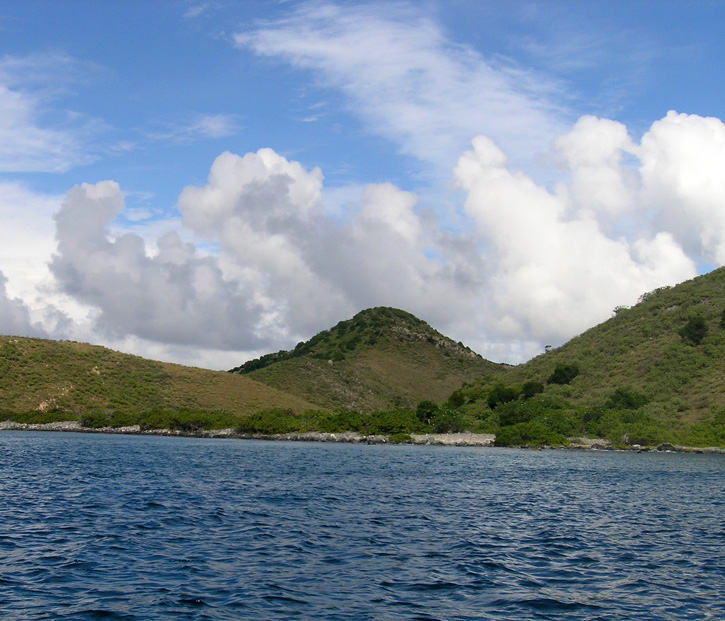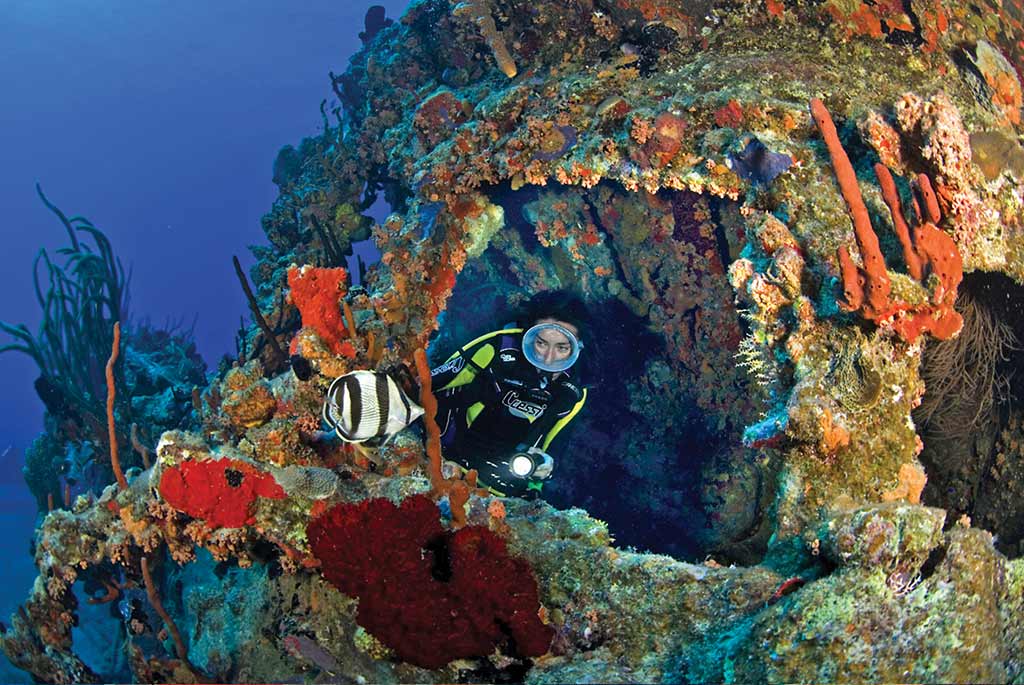Before refrigeration, islanders relied on salt to preserve meat. Many islands in the Virgins have salt ponds where crystal salt was collected, but no island had a larger or more productive pond than Salt Island, a small T-shaped island about five miles from Tortola. For centuries the small settlement on Salt Island thrived on the salt industry.

No one lives on Salt Island year-round, although some Salt Islanders who live on Tortola come back regularly and tend the smattering of houses in the bay. Photo © Peter Pawlowski, licensed Creative Commons Attribution.
Traditionally, the Salt Island harvest was a time of great festivity. Residents from nearby islands would travel there to watch as a government agent supervised the “breaking of the pond.”Salt is harvested in the early spring, before the rainy season begins. Traditionally, the Salt Island harvest was a time of great festivity. Residents from nearby islands would travel there to watch as a government agent supervised the “breaking of the pond.” After it was harvested from the pond, the salt was dried in a special salt house. Up to 1,000 pounds of salt were harvested annually from Salt Island. Today, islanders still harvest salt, but on a much smaller scale. Most of it is finely ground and mixed with local seasonings to make “seasoning salt” for fish and meat.No one still lives on Salt Island year-round, although some Salt Islanders who live on Tortola come back regularly and tend the smattering of houses in the bay. The settlement along the north coast is a cluster of simple homes, set amid coconut palms. There are no restaurants, snack bars, or stores, and no electricity or potable water. But the settlement provides a unique glimpse into the past.
When you visit, look around the settlement for signs of life. If someone happens to be home, be sure to extend them the courtesy of a greeting and an explanation of what you intend to do. Someone may even agree to show you around. Hiking trails circle the pond, or you can trek over to South Bay in the west or the Sound in the east. There is a cemetery of Rhone shipwreck victims a few dozen yards from the settlement in Lee Bay. And remember: Don’t disturb the salt pond or take any salt unless you have permission.
The wreck of the RMS Rhone is the preeminent dive site in the British Virgin Islands and one of its most visited attractions. The 310-foot twin-masted steamer, which sank during a ferocious hurricane in 1867, lies in three sections west of Salt Island and has beckoned underwater explorers for decades. In 1977 it was the primary filming location for the movie The Deep, starring Nick Nolte and Jacqueline Bisset.
Lying in 65-80 feet of water, the bow is the deepest, largest, and most intact section of the Rhone. Here divers can enter the interior of the vessel and will find the mast and crow’s nest still attached to the ship. The midsection, lying in about 60 feet of water, is dominated by a series of support beams—all that remains of the ship’s deck. The stern, the shallowest part of the wreck, can be explored by snorkelers as well as divers. It features the ship’s large rudder and 15-foot propeller.
Divers should not try to explore the whole wreck in one dive. It is too deep, and there is too much to see. The best way to explore the ship is to start with a dive on the deepest section, the bow, and follow that with another dive on the stern and midsection. If you really want to get to know this wreck, however, you will need to plan more than two dives and include one at night, when it comes alive with unusual and colorful sealife.

Diving at the RMS Rhone National Park wreck site. Photo © Susanna Henighan Potter.
Visibility around the wreck is usually good—between 60 and 100 feet. The bow and midsection are sometimes susceptible to currents. For ease and safety, always go diving with a local dive company, since staff will be familiar with local conditions and dangers.
Local dive boats visit the Rhone every day of the year. In fact, many days it seems like a whole fleet makes the journey. For the best experience, choose a dive boat that specializes in small groups and avoid the busiest times, 9am-noon and 2pm-4pm.
There is no ferry service to Salt Island. Sail Caribbean Divers (284/495-1675) offers an occasional day trip to Salt Island which includes sightseeing around the settlement, a hike, and snorkeling at the RMS Rhone.
Sailors can anchor at Salt Island Bay or moor at Lee Bay. Both are exposed, however, and are considered day-use only.
Descendants of Salt Island residents usually organize a day trip, including ferry and lunch, on a bank holiday in the springtime. Ask around or check the local papers and radio stations for advertisements of this outing.
Excerpted from the Sixth Edition of Moon U.S. & British Virgin Islands.